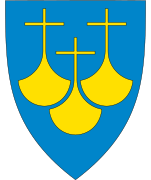Sunnylven Church
Sunnylven Church (Norwegian: Sunnylven kyrkje) is a parish church of the Church of Norway in Stranda Municipality in Møre og Romsdal county, Norway. It is located in the village of Hellesylt, at the end of the Sunnylvsfjorden. It is the church for the Sunnylven parish which is part of the Nordre Sunnmøre prosti (deanery) in the Diocese of Møre. The white, wooden church was built in a long church style in 1859 by the builder Ludolph Rolfsen who used plans by the architect Hans Ditlev Franciscus Linstow. The church seats about 400 people.[1][2]
| Sunnylven Church | |
|---|---|
| Sunnylven kyrkje | |
 View of Sunnylven Church at Hellesylt Credit: Miguel Angel Barroso Lorenzo | |
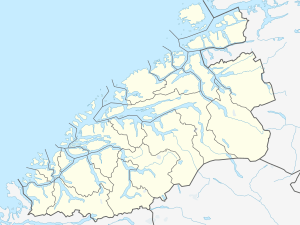 Sunnylven Church Location of the church 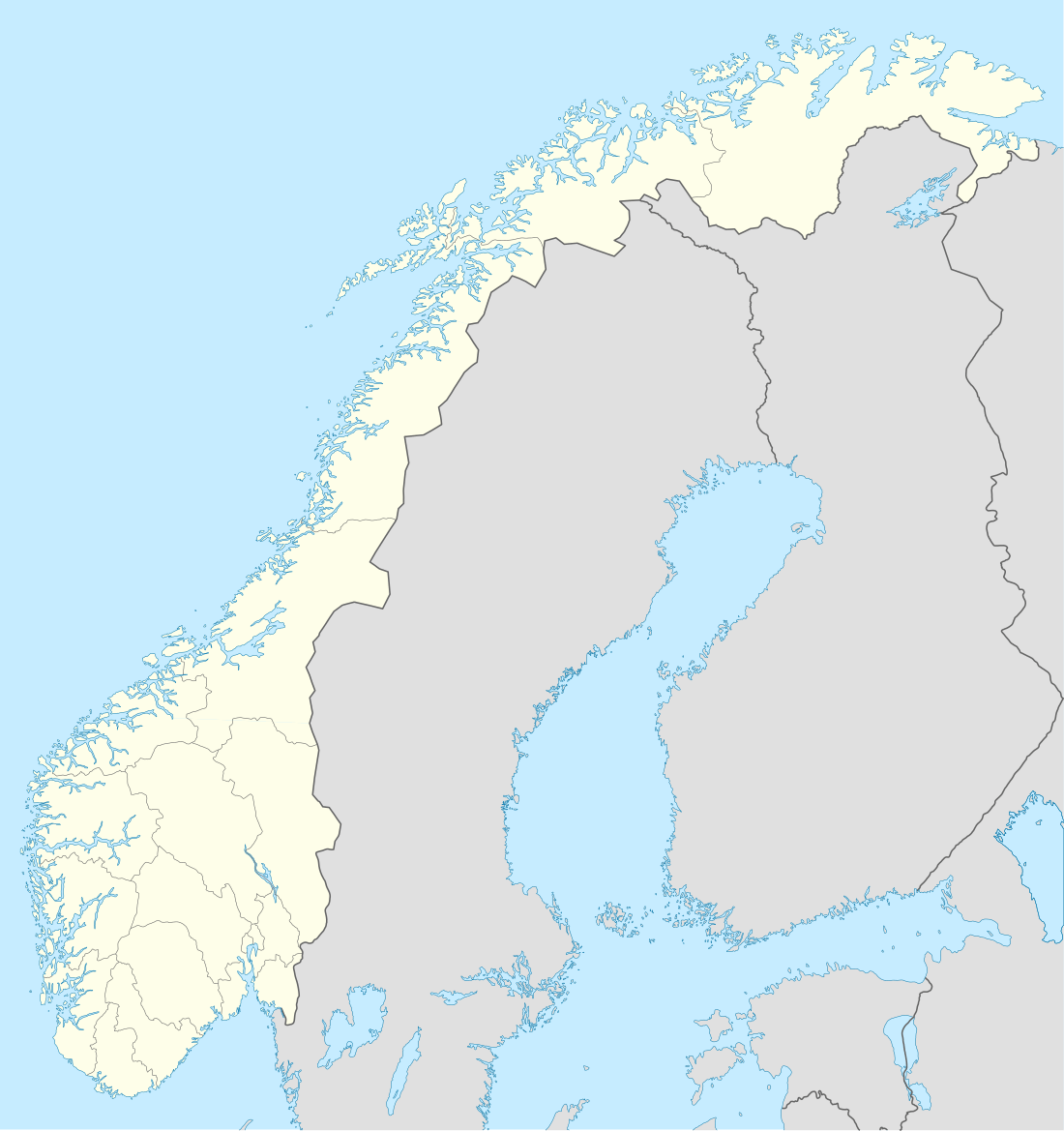 Sunnylven Church Sunnylven Church (Norway) | |
| 62.0854°N 6.8660°E | |
| Location | Stranda Municipality, Møre og Romsdal |
| Country | Norway |
| Denomination | Church of Norway |
| Churchmanship | Evangelical Lutheran |
| History | |
| Status | Parish church |
| Consecrated | 7 August 1859 |
| Architecture | |
| Functional status | Active |
| Architect(s) | Ludolph Rolfsen Hans Linstow |
| Architectural type | Long church |
| Completed | 1859 |
| Specifications | |
| Capacity | 400 |
| Materials | Wood |
| Administration | |
| Parish | Sunnylven |
| Deanery | Nordre Sunnmøre prosti |
| Diocese | Møre |
History
The earliest existing historical records of the church date back to 1432,[3] but there has been a church here in the Hellesylt area dating back to at least 1150.[4]
The church was historically located on the Korsbrekke farm, just east of the village of Hellesylt. In 1668, there was a cruciform stave church that was too small for the congregation. In 1726, the church was destroyed by heavy snow. At that time, they chose to replace the church, but build it in a new location on the southwest side of the village of Hellesylt, on a hill overlooking the village. This new church was consecrated in 1730. The new building was a timber-framed cruciform design. It was in use until Pentecost Sunday 1858, when it was torn down shortly after.[5]
A new "long church" building was constructed on the same site over the proceeding summer and fall, and it was consecrated the following year in 1859. Captain Ludolph Rolfsen from the nearby Stryn Municipality designed the church based on drawings by Hans Ditlev Franciscus Linstow. Rolfsen also headed the construction of Hornindal Church and Nedstryn Church, both in the Nordfjord region to the south of here, and these churches share many features. Shipbuilder Nils A. Liaaen of Sunnylven designed Sylte Church in 1862 and was probably inspired by this church at Hellesylt.[6]
Playwright Henrik Ibsen visited Hellesylt in the summer of 1862[7] when this church was new and Sunnylven with Geiranger had just been named a separate prestegjeld (parish). The municipality of Sunnylven and the local priest, Rev. Ole Olsen Barman (born 1816),[8] was an inspiration for Ibsen's dramatic poem Brand.[9]
Media gallery
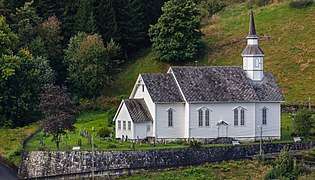
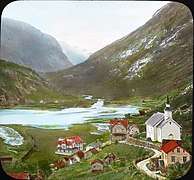 Colored photo, circa 1900.
Colored photo, circa 1900.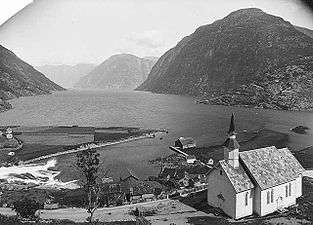

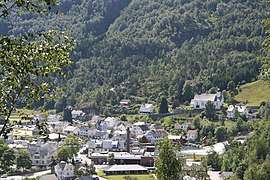
See also
References
- "Sunnylven kyrkje, Hellesylt". Kirkesøk: Kirkebyggdatabasen. Retrieved 2019-08-25.
- "Oversikt over Nåværende Kirker" (in Norwegian). KirkeKonsulenten.no. Retrieved 2019-08-25.
- "Sunnylven gamle kirkested - Korsbrekke" (in Norwegian). Norwegian Directorate for Cultural Heritage. Retrieved 2019-08-25.
- "Sunnylven kyrkje" (in Norwegian). Kulturnett: Møre og Romsdal. Retrieved 2013-06-28.
- "Sunnylven kyrkjestad" (in Norwegian). Norwegian Directorate for Cultural Heritage. Retrieved 2019-08-25.
- Ekroll, Øystein (2012). Sunnmørskyrkjene - historie, kunst og arkitektur (in Norwegian). Larsnes: Bla.
- Store norske leksikon. "Henrik Ibsen (utdypning)" (in Norwegian). Retrieved 2013-06-28.
- Lampe, Johan Fredrik (1895). Bergens Stifts Biskoper og Præster efter Reformationen: Biografiske Efterretninger. Kristiania: Cammermeyers Boghandel. pp. 247 and 293.
- Koht, Halvdan (1954). Henrik Ibsen - eit diktarliv. 1. Oslo: Aschehoug. p. 249.

